The Northern Cape province of South Africa is a wonderfully diverse region for birdwatching, with over 300 species of birds inhabiting the area.
The province is home to a variety of habitats, including the semi-arid Karoo, the dry savannah of the Kalahari, and the lush wetlands of the Orange River.
These habitats provide a haven for resident and migratory birds alike, offering a range of opportunities for birders to observe a variety of species.
From the brilliant colors of the raptors of the Kalahari to the secretive and skulking denizens of the Karoo, there’s something for everyone in the Northern Cape.
1. African Red-eyed Bulbul
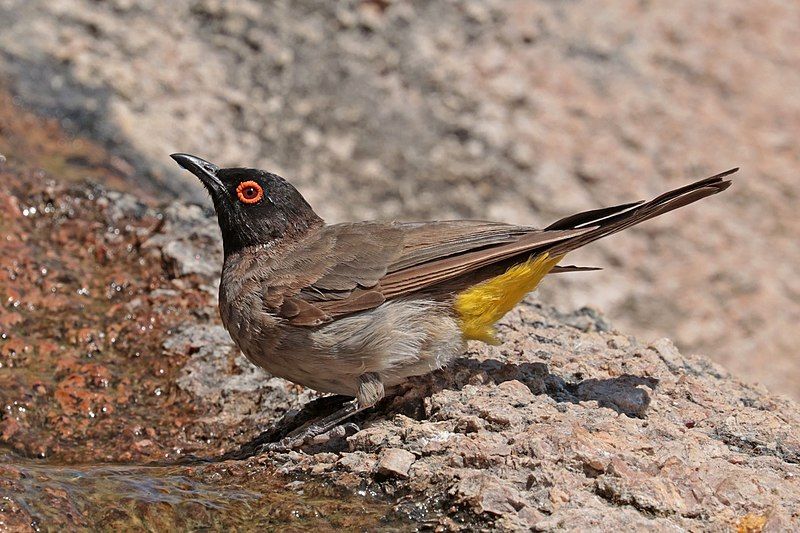
The African red-eyed bulbul, also known as the black-fronted bulbul, is a species of songbird belonging to the family Pycnonotidae.
It is native to the southwestern region of Africa, where it inhabits a variety of habitats, including dry savanna, subtropical or tropical dry shrubland, and riverine scrub.
These birds are omnivorous in nature, feeding on a variety of items such as fruit, flowers, nectar, and insects.
They are typically seen in small flocks and are known for their distinctive call. The African red-eyed bulbul is a medium-sized bird with a long tail and bright red eyes. It has a distinctive black forehead and crest, as well as a black throat and belly.
The rest of the body is brownish-grey in color. The bird’s wings are short and rounded, while its legs are long and strong. The African red-eyed bulbul is not considered to be a threatened species.
However, its population may be declining due to habitat destruction and fragmentation, which reduces the availability of its food sources. Additionally, illegal hunting and trapping of birds have been known to occur.
To prevent further population decline, conservation efforts are needed to protect the bird’s habitats and food sources.
| Kingdom | Animalia |
| Phylum | Chordata |
| Class | Aves |
| Order | Passeriformes |
| Family | Pycnonotidae |
| Genus | Pycnonotus |
| Species | P. nigricans |
2. Familiar Chat
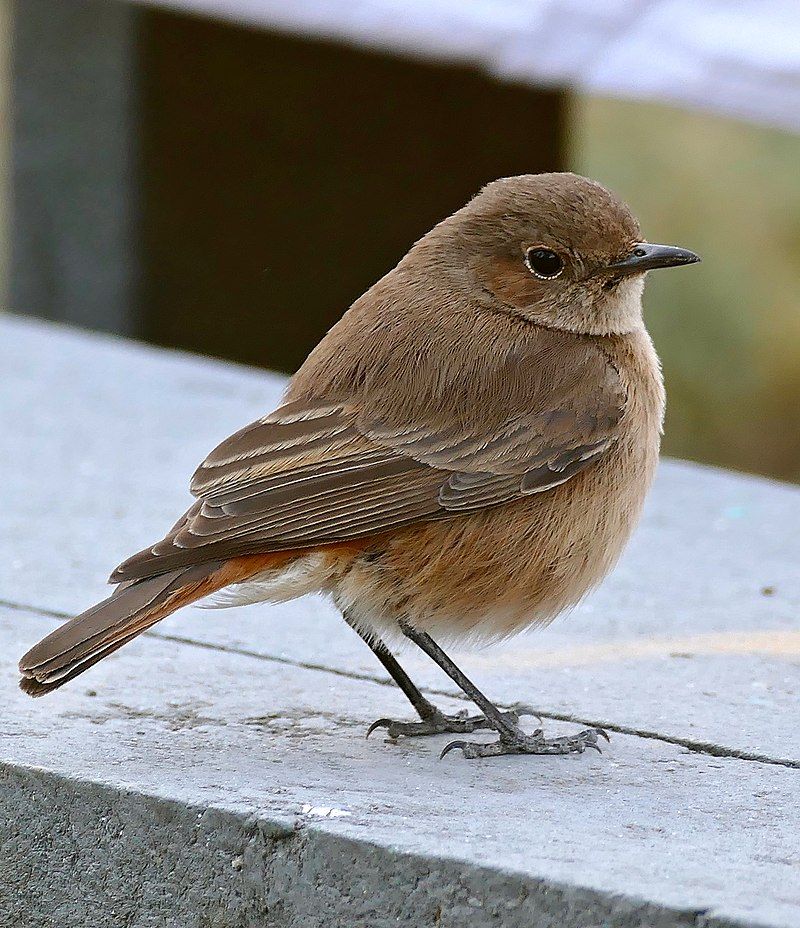
The Familiar Chat is a type of bird belonging to the Muscicapidae family, which is a family of Old World flycatchers. This small passerine bird is a common resident breeder in Africa, south of the Sahara Desert.
It is found in a variety of habitats, including rocky and mountainous areas, as well as near human settlements. The Familiar Chat is an adaptable species that is able to survive and thrive in a wide range of environments.
It is also known for its beautiful song, which is a melodious warbling. The Familiar Chat is a popular bird among birdwatchers in Africa, due to its stunning plumage and its presence near human settlements.
| Kingdom | Animalia |
| Phylum | Chordata |
| Class | Aves |
| Order | Passeriformes |
| Family | Muscicapidae |
| Genus | Oenanthe |
| Species | O. familiaris |
3. Desert Cisticola
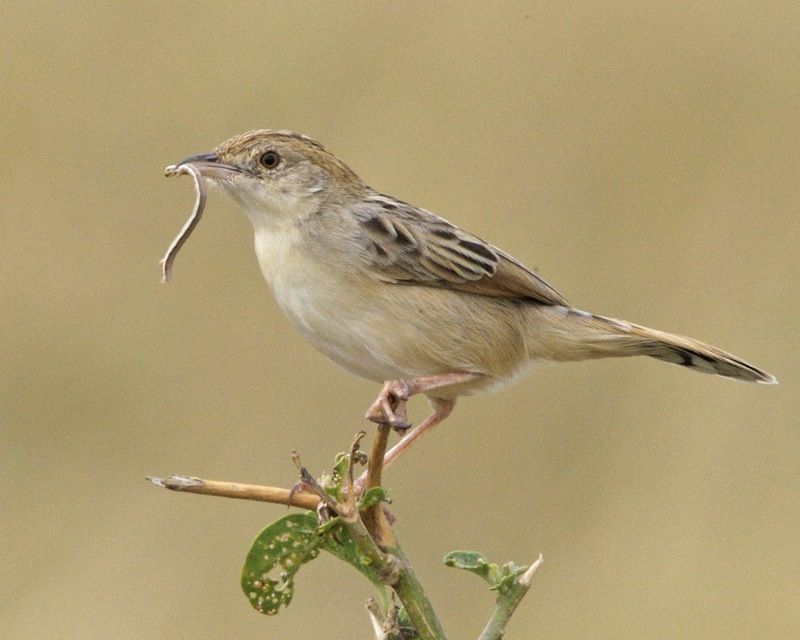
The desert cisticola is a type of bird that is found in many areas of sub-Saharan Africa. It is a species in the Cisticolidae family, which is part of the Old World Warbler group.
This species can be found in most parts of sub-Saharan Africa, with the exception of some central and western coastal areas of the continent. This species of bird prefers arid climates and is often found in deserts and other areas with little vegetation.
It has a distinct call that is often heard in the early morning and late evening. The desert cisticola is a small bird, usually no more than five inches in length.
Its plumage is usually a light brown or beige color, with white stripes running along the sides of its head and chest. It also has a yellow-colored throat and a black-tipped tail.
The desert cisticola is a highly adaptable species and is able to survive in a wide variety of habitats, including grasslands, scrublands, and open woodlands. It feeds on small insects, berries, and seeds and is an important part of the local food chain.
| Kingdom | Animalia |
| Phylum | Chordata |
| Class | Aves |
| Order | Passeriformes |
| Family | Cisticolidae |
| Genus | Cisticola |
| Species | C. aridulus |
4. Kalahari Scrub Robin
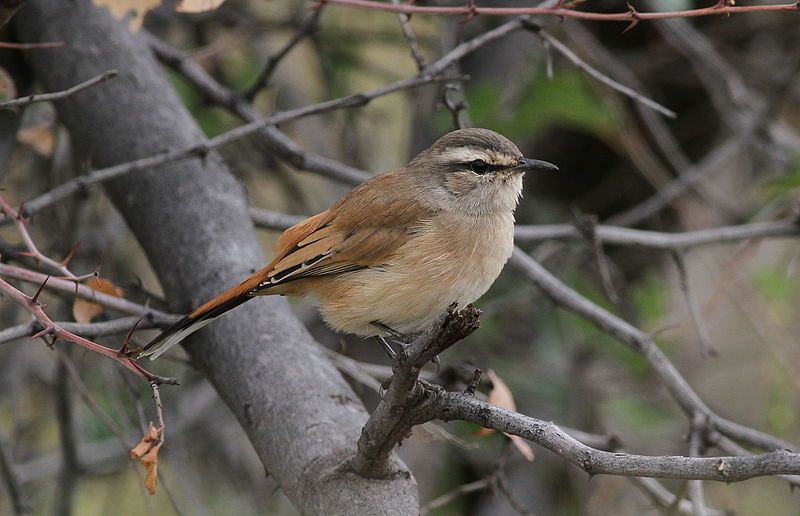
The Kalahari scrub robin is a small, sparrow-like species of bird belonging to the Muscicapidae family, which includes many other species of passerines. It is native to the Kalahari region of Southern Africa, particularly Botswana, Namibia, and South Africa.
The Kalahari scrub robin has a brownish-gray upper body, with a white belly and black wings. It also has a white eye ring, a distinctive feature that sets it apart from its relatives.
The Kalahari scrub robin has a wide range and is commonly found in dry, sandy areas, such as savannahs, grasslands, and even arid regions. This species of bird is often found by itself or in small groups, but it may also join mixed-species flocks.
The Kalahari scrub robin has a distinct call, and it is sometimes referred to as the sandy scrub robin due to its preference for sandy habitats. It feeds mainly on insects, but it will also eat seeds and other small invertebrates.
The Kalahari scrub robin is not considered to be endangered, though its population has declined due to habitat loss and other human activities.
| Kingdom | Animalia |
| Phylum | Chordata |
| Class | Aves |
| Order | Passeriformes |
| Family | Muscicapidae |
| Genus | Cercotrichas |
| Species | C. paena |
5. Ant-eating Chat
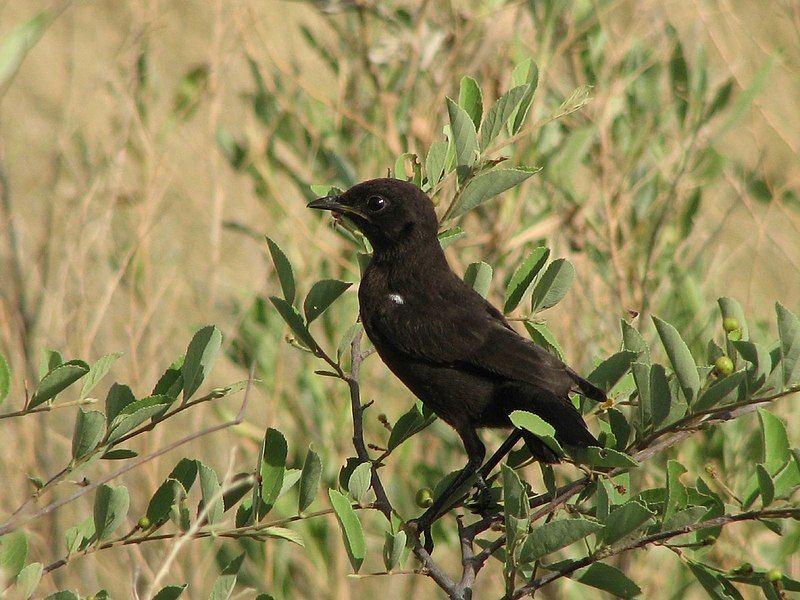
The ant-eating chat, or southern anteater-chat, is a species of bird found in Botswana, Eswatini, Lesotho, Namibia, South Africa, and Zimbabwe. This species belongs to the family Muscicapidae, which includes many species of thrushes, warblers, flycatchers, and chats.
The ant-eating chat has adapted to living in dry, arid habitats. Its natural habitats include subtropical or tropical dry shrubland and subtropical or tropical dry lowland grassland.
These habitats provide the ant-eating cat with plenty of food in the form of insects and other small animals. The shrubland gives the ant-eating chat places to hide from predators, while the grassland provides plenty of open space for the bird to hunt and feed.
The ant-eating chat is an important part of the ecosystem of its native habitats, as it helps to control insect populations and other small animals.
| Kingdom | Animalia |
| Phylum | Chordata |
| Class | Aves |
| Order | Passeriformes |
| Family | Muscicapidae |
| Genus | Myrmecocichla |
| Species | M. formicivora |
6. Cape Long-billed Lark
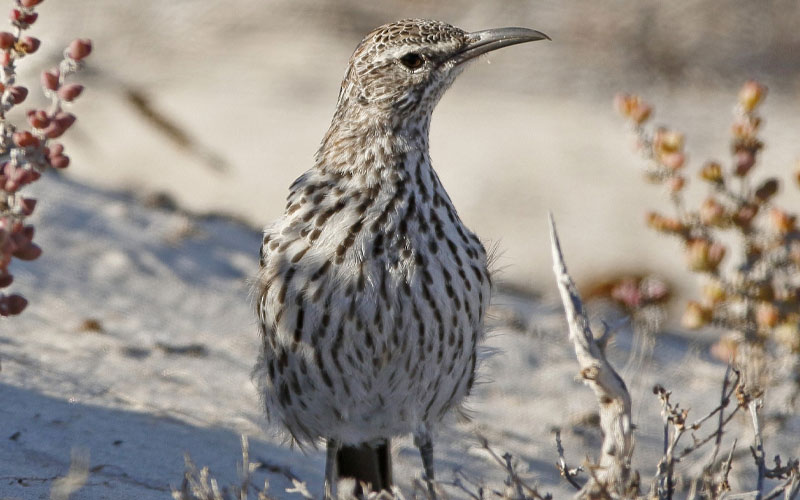
The Cape Long-billed Lark is a species of lark belonging to the family Alaudidae.
It is native to southwestern Africa and inhabits a variety of habitats, including semi-arid Karoo shrubland, subtropical dry shrubland, subtropical or dry lowland grassland, and highveld grassland.
This bird can also be known as the Cape Lark, Cape Longbill, or Long-billed Lark. The Cape Long-billed Lark has a distinctive plumage, which is grey-brown on the upperparts and whitish on the underparts.
It has a blackish crown, a blackish-brown patch on the side of its head, and a long, thin bill. The lark can reach a length of around 14 cm and a wingspan of 24 cm. The Cape Long-billed Lark is typically found in open, dry habitats.
It feeds mainly on the ground, eating seeds, insects, and other small invertebrates. It is usually seen alone or in pairs, and during the breeding season, pairs may form loose colonies.
The female typically builds the nest in a low shrub or tree, and the eggs are incubated by both parents. The Cape Long-billed Lark is considered to be of least concern by the IUCN, as its population is thought to be stable.
Its range is also relatively large and it is not threatened by any major human activities.
| Kingdom | Animalia |
| Phylum | Chordata |
| Class | Aves |
| Order | Passeriformes |
| Family | Alaudidae |
| Genus | Certhilauda |
| Species | C. curvirostris |
7. Northern Black Korhaan
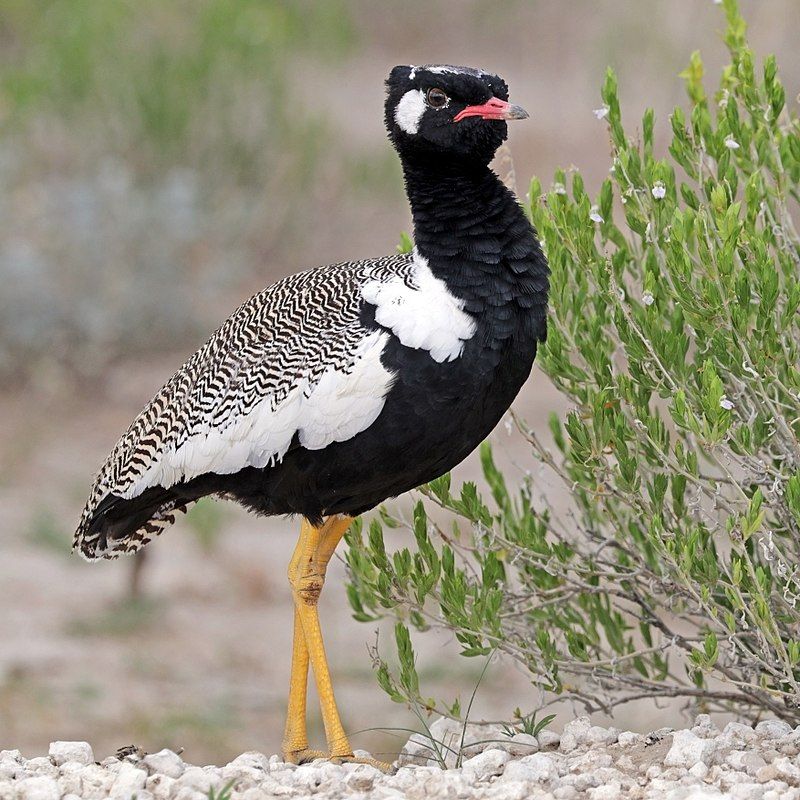
The northern black korhaan is a species of bird belonging to the bustard family, Otididae. It is commonly found in Southern Africa and inhabits the open grassland and scrublands.
This species is also known as the white-quilled bustard due to its white feathers on its wings and tail. The northern black korhaan is a large bird with a length of up to 70 cm and it has a distinct black plumage. The head and neck are dark grey and the back and wings are black.
Its beak is yellow and it has white feathers on its wings and tail. Its legs are yellow and its eyes are a brilliant yellow. This species of bird is an omnivore, meaning it eats both plants and animals and is known to forage for insects, small rodents, seeds, and fruits.
They are usually found alone or in small groups, but during the breeding season, they form larger flocks.
The northern black korhaan has a variety of calls including a loud, rolling caw, that can be heard from far distances. The northern black korhaan is a ground-dwelling bird and prefers to walk or run when foraging for food.
This species is not endangered, but its population is decreasing due to habitat destruction and hunting. Conservation efforts are being taken to protect this species and its habitat.
| Kingdom | Animalia |
| Phylum | Chordata |
| Class | Aves |
| Order | Otidiformes |
| Family | Otididae |
| Genus | Afrotis |
| Species | A. afraoides |
8. Cape Clapper Lark
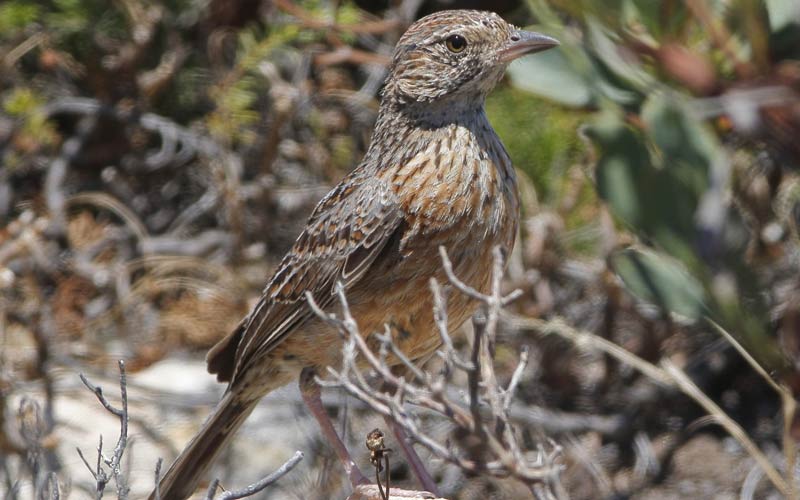
Source: ebird.org
The Cape Clapper lark is a small passerine bird that is native to southern Africa. It is known for its distinctive wing clapping during its display flight, hence its name.
The Cape clapper lark prefers open grasslands and savannah habitats, but can also be found in karoo, fynbos, and fallow agricultural land. Its habitat is characterized by sparse vegetation and ample space for flight.
The Cape clapper lark is well-adapted to these environments, with plumage colors that blend in easily with its surroundings. The bird feeds on insects and small invertebrates, which it forages for on the ground. It also feeds on grains and seeds, particularly those of grasses.
The Cape Clapper lark is a solitary species, but during the breeding season, they form pairs and establish territories. The male performs its display flight in order to attract a mate and stake out its territory.
The Cape Clapper lark is an important part of its local ecosystem and is an indicator of healthy grasslands and savannahs.
| Kingdom | Animalia |
| Phylum | Chordata |
| Class | Aves |
| Order | Passeriformes |
| Family | Alaudidae |
| Genus | Mirafra |
| Species | M. apiata |
9. Black-headed Canary
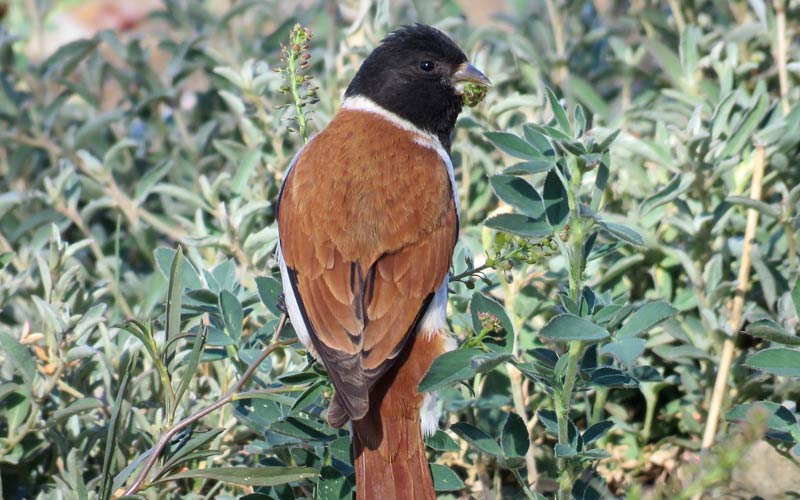
Source: ebird.org
The black-headed canary is a species of finch native to the regions of Lesotho, Namibia, and South Africa. It is a small bird that is sometimes classified as a member of the genus Alario, with its scientific name being Alario Alario.
This species of finch lives in dry areas such as open scrub, grassland, the peripheries of farmed areas, and suburban gardens. It is a small, sparrow-like bird with a bright yellow body and a black head. Its diet consists of seeds, insects, and other small invertebrates.
This species of finch is mostly a resident bird, meaning that it will not migrate and will remain in the same area for its entire life. The black-headed canary is a social bird that can often be found in groups of up to 15 individuals.
It is also a vocal bird, making a variety of chirping and tinkling calls. They are known to be hardy little birds that make great pets for those who have the right environment and resources.
| Kingdom | Animalia |
| Phylum | Chordata |
| Class | Aves |
| Order | Passeriformes |
| Family | Fringillidae |
| Genus | Serinus |
| Species | S. alario |
10. Black-chested Prinia
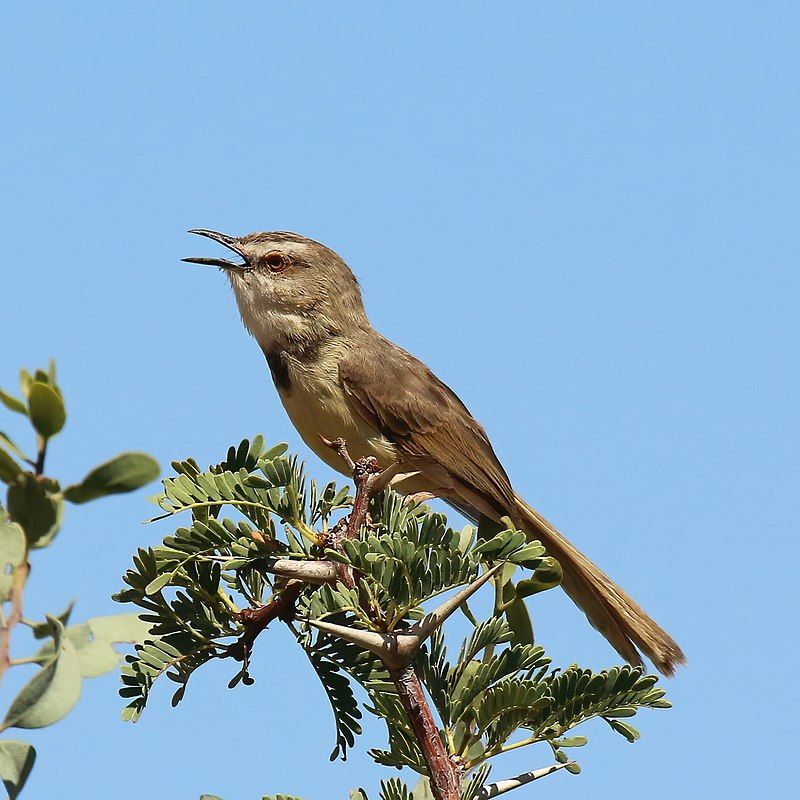
The black-chested prinia is a species of bird that belongs to the Cisticolidae family. It is distributed mainly throughout sub-Saharan Africa, in countries such as Angola, Botswana, Lesotho, Namibia, South Africa, Zambia, and Zimbabwe.
Its natural habitat is dry savanna, an ecosystem characterized by its open grasslands, sparse shrubbery, and scattered trees. The dry savanna provides the black-chested Prinia with ample foraging opportunities, as well as a protective cover in the form of trees and shrubs.
This species of bird is generally found in lowlands and is quite common in grassland and scrub habitats. It feeds mainly on insects, but also consumes seeds and other small invertebrates.
The black-chested prinia is a small, greyish-brown bird that has a black breast and a white-tipped tail. It is mainly active during the day, and can often be seen perching on branches or foraging for food on the ground.
This species of bird is important in its environment, as it helps to control insect populations that could otherwise harm crops and other vegetation.
| Kingdom | Animalia |
| Phylum | Chordata |
| Class | Aves |
| Order | Passeriformes |
| Family | Cisticolidae |
| Genus | Prinia |
| Species | P. flavicans |
Conclusion
The Northern Cape is home to a wide variety of birds, including several species of ducks, geese, herons, raptors, waders, and passerines.
The region boasts some of the most diverse and abundant bird populations in South Africa, and many of these species are found nowhere else.
This makes the Northern Cape an essential destination for birders from around the world. With its stunning landscapes and abundant birdlife, the Northern Cape is truly a paradise for birders.